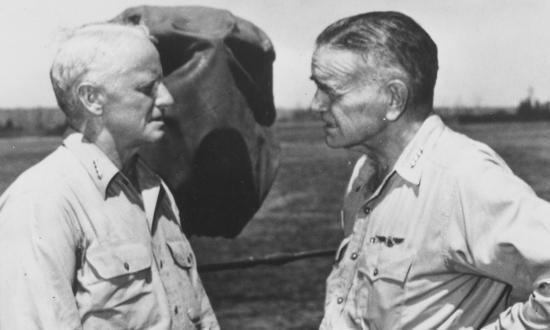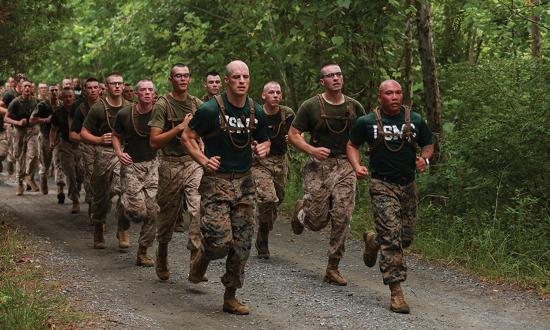Connectedness—Surface Warfare: The Competitive Edge emphasizes that it is essential to “build strong teams and greater resilience across the force.”1 An increased emphasis on connectedness also is found across guidance from Navy leaders such as the 2019 Navy Leadership Development Framework and the Chief of Naval Operations’ Navigation Plan 2022. It is through connectedness, this guidance tells us, that leaders build the trust integral to mission success.
In Start with Why, author and leadership guru Simon Sinek explains, “Trust matters. Trust comes from being part of a culture or organization with a common set of values and beliefs.”2 According to Oxford Languages, connectedness is “a feeling of belonging to or having affinity with a particular person or group.”3
Champion Connectedness
Connectedness and trust are integral to mission success—branding is one method to increase both. Though officers receive substantial training en route to command, that highly specialized training is unlikely to address how to build a brand. Yet, brand building is absolutely commander’s business because it is fundamentally a form of communication. Clear, concise communication that connects each team member to a collective identity is the underpinning for an effective brand.
The idea of building a brand may sound daunting. Our professional experience and training never focus on building a brand. On reflection, however, you probably have more experience than you think. In his book, Take Command, author Jake Wood says that “in truth, a brand is simply whatever it is your [command] stands for, and every [command] stands for something, whether you know it or not.”4
When it comes to building a brand, the Navy has provided us an incredible opportunity. Unlike a civilian startup or corporate reimagining effort, the Navy takes great care in celebrating and connecting to its distinguished heritage and purpose. Your command already has a story to celebrate and with which to connect your sailors. Your command’s brand tells the story of how it uniquely contributes to the military’s overall “why”: to support and defend the Constitution.
Craft Your Command Story
New commanding officers all inherit ships and units with rich and inspiring histories—whether named after a city, a battle, a naval hero, a menacing mascot, or a champion of freedom. You do not have to look outside the lifelines to find inspiration. Every command has a story. Your command is no exception, although some stories are more apparent than others.
If your command’s story is readily apparent, amplify it; if your command’s story is not, seek it out. A great starting point is to read a book about your namesake or one in which your unit is featured prominently. Thanks to tremendous namesakes and examples of heroism throughout our military history, you do not have to start from scratch. You simply must find and tell the story that already exists.
In his book Legacy, author James Kerr writes about how the New Zealand All Blacks—a rugby team known for its brand and iconic silver fern logo—embody their competitive advantage as their central narrative. It is not so much what the All Blacks do, but rather who they are, what they stand for, and why they exist.5 In short, the team’s identity is what matters most. Other elite teams, such as the Fire Department of the City of New York, Navy SEALs, or the Blue Angels, also use visual symbols to evoke their organization’s purpose and tell the story of why they matter.
Whether or not your command’s story is common knowledge, it is now your responsibility to inculcate your crew with your ship’s story and brand. The greatest honor of my career was to serve on board the USS Stockdale (DDG-106) and command her for almost two years. Vice Admiral James Bond Stockdale was an aviator, philosopher, and Medal of Honor recipient. He was well known for his leadership and strength through extreme adversity. His name is featured prominently on Coronado Island, Naval Air Station North Island, and at educational institutions throughout the Navy.
Then-Captain Fred Kacher, the Stockdale’s first commanding officer, wrote of connectedness in his 2014 Proceedings article, “The Ultimate Startup: Commissioning a U.S. Navy Warship.” He wrote, “Whether your ship is named for a state, city, hero, or statesman, the commissioning process creates a special bond between the crew and those affiliated with the ship’s namesake.”6 For Kacher and the ship’s commissioning crew, the relationships they forged with the Stockdale family and those who sacrificed alongside him in North Vietnam provided an inspiring legacy to admire and protect.7
Celebrate the Connection
Start building your brand by putting events from your command’s history into your calendar, communicating their importance to your crew, and making plans to celebrate them. The month of September is special on board the Stockdale as the crew remembers the day their namesake was shot down over North Vietnam and recognize National POW/MIA Day. During April, we celebrate the ship’s commissioning anniversary and recommit to another year of stewardship. In April 2021, the ship made a port call to Port Hueneme, California—on the same day and to the same pier—12 years after the Stockdale commissioned. We threw an anniversary celebration complete with guests who attended the commissioning in 2009. This celebration provided the crew an opportunity to learn about the ship’s history and reconnect with friends of the ship, including one of Vice Admiral Stockdale’s sons.
Build your brand through the command indoctrination program and by including command and namesake history in your sailor qualification boards. During oral boards, we asked officers to explain how Stockdale would channel his “inner James Bond” while devising ways to communicate from his prison cell in the infamous Hanoi Hilton.8 Consider designing emblematics for sale in your command store that are infused with your command’s rich history. The Stockdale’s crew spent time designing hats, shirts, patches, coins, and water bottles with the ship’s motto and logos that sailors were proud to share with friends and family outside of the command. Most important, we referred to ourselves as “Team Double-O-Seven”—invoking Stockdale’s call sign—as a fast and easy way to remind everyone that we were part of something bigger.
Your command’s brand is the legacy of your namesake, the crews that have come before you, and the crews that will continue to man the rails for years after you go ashore. The service life of a military command is often decades; compared with typical tour lengths of two to five years, that horizon might as well be infinite. Kerr says, “True leaders are stewards of the future. They take responsibility for adding to the legacy. It’s your job to continue the legacy and add to it when you get your opportunity.”9 Every crew is another chapter in a story still being written. While in command, plant seeds that will bloom long after your tour.
Inspire Greatness
Building trust through increased connectedness gives your team something to lean on in hard times. Reminding your crew about your command’s brand—through storytelling or a unifying logo—reminds them they are part of something special; they are a team connected to the past and future, and together they can weather any storm. Whether it is rallying for the heated softball rivalry with a squadron across the flight line, coming together to pass a major inspection, or supporting each other through the challenges of life at sea, your brand helps unite the crew in purpose and common struggle. Sinek reminds us: “Passion comes from feeling like you are part of something bigger, something you believe in.”10
Whether it is a silver fern like that of the New Zealand All Blacks or a motivating cheer like the “Hooyah!” of the Navy SEALs, you will be pleasantly surprised if you are deliberate in crafting your story and persistent in your communication. Once you identify your brand, commit to it. Building a brand through storytelling will engender deeper trust and connectedness throughout your command, remind your sailors of their rich history, and inspire them to greatness.
1. Surface Warfare: The Competitive Edge, Commander, Naval Surface Forces, 20 December 2021, 7.
2. Simon Sinek, Start with Why: How Great Leaders Inspire Everyone to Take Action (Harlow, England: Portfolio/Penguin, 2009), 110.
3. “Connectedness,” Oxford English Dictionary.
4. Jake Wood, Take Command: Lessons in Leadership: How to Be a First Responder in Business (New York: Crown Business, 2014), 67.
5. James Kerr, Legacy: 15 Lessons in Leadership: What the All Blacks Can Teach Us about the Business of Life (Chicago: Constable, 2013), 13.
6. CAPT Fred W. Kacher and CDR Brandon Bryan, USN, “The Ultimate Startup: Commissioning a U.S. Navy Warship,” U.S. Naval Institute Proceedings 140, no. 9 (September 2014).
7. Kacher and Bryan, “The Ultimate Startup.”
8. VADM James B. Stockdale, USN, and Sybil Stockdale, In Love and War: The Story of a Family’s Ordeal and Sacrifice during the Vietnam Years (Boston: 1st ed, Harper & Row, 1984), 91.
9. Kerr, Legacy, 171.
10. Sinek, Start with Why, 111.








